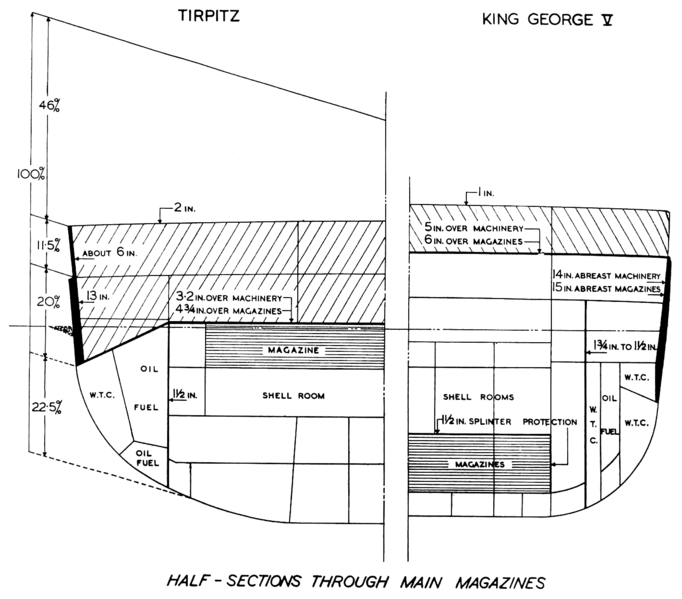shen
Senior Member
Well armored is a subjective term,
if you look at the sinking of the prince of wales and the repulse, versus the sinking of the Bismark
Bismark sunk with 4 torpedo hits and more than 400 shell hits, POW sank with 4 torpedo hits. Which only suggests that the armor scheme on the bismark is quite durable even if it is thin on paper.
Every country was constraint by the times they were in, the Bismark was supposed to get triple gun turrets, the KGV was supposed to get 3 quad turret. But when you talk about efficient... efficiency is generally the reverse of durability. had a shell stuck and jam/destroy a turret, a 3,3,3 design like the Iowa would lose 33% of it's firepower, a 2,2,2,2 design like the bismark would lose 25%. the Fuso.. with a 2,2,2,2,2,2 will only lose 16.6% of it's firepower.
How an E-boat work with the Frit-X? look at the soviet Komar class. The fritz-X was not as advanced yet, but it technically is a beam riding missile, except the operator controls the missle onto the beam. technically, if the operator can keep the crosshair on target untill the missle hits, that is all that is needed
Fritz-X was a glide bomb. It is not going anywhere from a boat. Not a beam rider either.

Most battleship don't rely on armor for protection against underwater explosion. Look at the diagram, underwater protection derives from a careful arrangement of wet and dry compartments to absorb the force of explosion.
From the same diagram you can also see that KGVs armor protection was far more extensive than Bismark. Bismark's main-belt was shallow and the secondary 6" belt was useless against battleship guns. Therefore much of Bismark vital system was vulnerable and battle experience proves that. While Bismark was hard to physically sink (due to its good compartmentalization), its fire control and electric power was knocked out early in its final battle. After that Bismark was essentially a helpless drunken giant at the mercy of its enemy.
I wasn't think about the 2x4 main turrets arraignment when I wrote Bismark was an inefficient design for its weight class. The easiest example of Bismark's outdated design is its single purpose secondary batteries. It carried 12 6" single purpose gun that can only engage surface targets and another 16 4.1" AA guns against air targets. Other nations already moved on dual purpose secondary battery that can do the job at a significant weight saving. The best example was the excellent US 5"/38 DP guns.
Bismark's mixed armor protection scheme and single purpose secondary batteries are both vestiges of WWI era capital ship design philosophy that reflect the outdated naval thinking in Nazi Germany.
